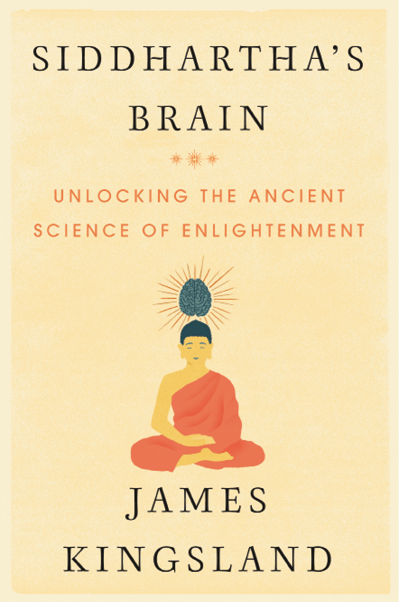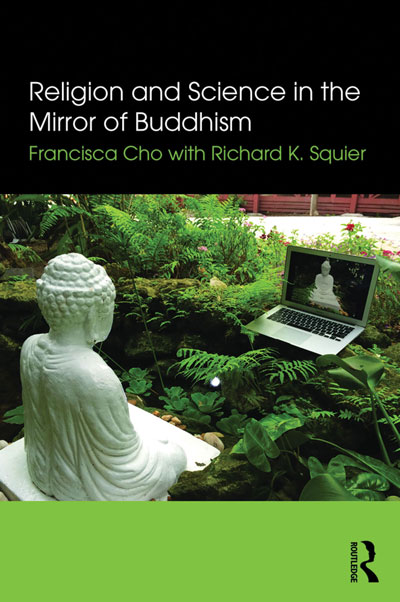
352 pp.; $27.99 (cloth)
There has long been a debate in the West about whether we should think of Buddhism as a “religion” like Christianity, Islam, and the other revealed faiths, or whether it is truly something else altogether. The Buddha himself often seemed to reject the notion of faith: he insisted that his followers trust their own experience rather than the supposed wisdom of others, and rejected much of the religious teaching of his time as little more than superstition. He considered himself an empiricist, relying on evidence rather than divine providence for his authority. And in modern times many writers and scholars, in a stream of books over the decades, from Fritjof Capra’s The Tao of Physics to Matthieu Ricard and Trinh Xuan Thuan’s The Quantum and the Lotus to the Dalai Lama’s own The Universe in a Single Atom, have suggested that Buddhist thought is somehow more compatible with science and reason.
Two new books now tackle this broad issue from entirely different angles and reach entirely different conclusions. One, aimed at a wide audience of lay readers, seeks to use recent scientific findings to explain the effects of Buddhist practice. The other, a densely argued academic treatise, largely rejects such attempts to reconcile Buddhism and science.
James Kingsland’s book Siddhartha’s Brain is by far the more accessible of the two. Kingsland, a prominent science and medical journalist, uses the latest advances in neuroscience to illuminate the biological foundations of mindfulness and meditation. Along the way, he also retells Siddhartha’s own journey from pampered prince to world-honored sage and makes a compelling case for why this 2,500-year-old story remains relevant to us today.
Kingsland explains, for example, how life in the world’s wealthiest countries often mirrors young Siddhartha’s sheltered existence:
Like him, many of us have been raised in a fool’s paradise. Most people in the developed world have food in abundance; entertainment and pleasant distractions are just a short journey or finger tap away; drugs and surgery give us the illusion that we can defeat disease and aging (though in reality they simply delay and prolong our old age). Until comparatively recently in human history, encounters with death were commonplace, but young people nowadays find it almost impossible that one day they too will die.
And yet, as Siddhartha found, these luxuries do not bring us true happiness. Instead we suffer from the chronic stress that Kingsland describes as a natural byproduct of our larger brains, a basic design flaw in the evolutionary process. All the neurological complexity that allowed humans to build cities, establish trade and commerce, and develop sophisticated cultures also created severe mental suffering.
Luckily for us, there is a cure for this existential angst: meditation. “Nobody ‘invented’ meditation,” Kingsland argues. Rather, various people across the millennia have stumbled on our body’s natural antidote, “a mental trick that could be used to restore one’s physiology to a more relaxed, baseline state.” This “trick” is the common thread that runs through the great spiritual traditions throughout human history.
Some practitioners may object to the reduction of Buddhist meditation to a sort of neurological reset switch, as well as the implication that all meditation practices—“whether Qi Gong, mindfulness, TM, yoga, or repetitive prayer” —are essentially equivalent, merely slightly different means to the same biological end. Kingsland may get a little ahead of the scientific evidence when he confidently proclaims the simple formula he believes lies at the heart of every meditation practice, and imagines its possible origins among our ancient ancestors:
All it takes to evoke the relaxation response—the gateway to all forms of meditation—is to focus exclusively on a repetitive stimulus or movement to break the stream of ordinary thought. In our deep prehistoric past, hunter-gatherers staring into the flames of their fires may have fallen into a meditative state, found the experience profoundly calming and learned to do it at will.
Perhaps Kingsland’s trick is, in fact, the “gateway” to a more mindful state, although centuries of Buddhist teachings suggest that prolonged practice leads to deeper states beyond this initial sense of calm. However, even skeptics will probably appreciate Kingsland’s survey of the now vast scientific literature on the positive impacts of meditation on our mental and physical health.
Kingsland has an impressive ability to explain widely disparate research results, no doubt as a result of his successful career covering science in the mainstream press. He tackles subjects ranging from brain-imaging studies of experienced meditators to the use of mindfulness to tackle addiction, and consistently strikes the balance between oversimplifying and needlessly complicating his explanations. He takes us through not only how and why meditation “works” but also the latest findings on its effectiveness in countering pain, depression, and many other modern maladies. And despite his broad claims for the neurological foundations of all meditation, he is never disrespectful to Buddhist tradition or its modern-day adherents. He recounts with some reverence his own visit to Amaravati Buddhist Monastery in southeast England, for example, and was clearly moved by his encounters with contemporary Buddhist teachers. His knowledge of Buddhist history is broad as well. Even readers well steeped in the sutras will likely come away having learned something new.

Cho confesses in her preface that “there is a severe allergic reaction in current [academic] Buddhist studies to the idea that Buddhism has something to teach Western society,” so anyone looking for an update of Capra’s Tao of Physics will be very disappointed. At times, she and Squier seem hostile to the very idea that Buddhism might be consistent with modern science, let alone the notion that it might inform contemporary scientific research. And although the authors apparently consider themselves “scientifically minded,” they explicitly reject a fundamental tenet of scientific thought, that is, “the widespread perception that empirical observations confirm some version of philosophical materialism and that all versions of materialism deem that the universe, including humans, amounts to nothing more than matter and its laws.”
The authors are certainly correct that this belief is common among practicing scientists, most of whom would surely consider it self-evidently true. Cho and Squier not only seem to doubt this contention but also consider such reductionism actively harmful, a source of “social and moral dis-ease.”
At the same time, even Cho and Squier acknowledge a true kinship between the Buddhist and scientific worldviews. While all cultures place some value on the evidence of our physical senses, they explain, “Buddhism and modern science take the rare step of consciously elevating sensory information over other sources of knowledge.” The Buddha himself, they seemed forced to admit, was basically a scientist.
Religion and Science will appeal primarily to graduate students and scholars, while Siddhartha’s Brain can be enjoyed by anyone who finds the scientific exploration of Buddhist meditation an intriguing topic. For those with the skills and patience to get through it, Cho and Squier’s work provides a deep and fascinating exploration of not just Buddhism and science, but the very nature of knowledge and understanding. For the most part, they raise questions rather than drawing firm conclusions. Kingsland’s thesis is a simpler one: he appears to fall firmly into the materialist camp, believing not only that Buddhism and science are compatible but also that science can fully explain how Buddhism actually works. He confidently narrates the Buddha’s final moments in the human realm as his “brain expired in an ecstatic burst of high-frequency electrical oscillations.”
Whether or not one is ready to go quite that far, Siddhartha’s Brain is a welcome addition to the popular literature on the biological basis and benefits of Buddhist practice. Kingsland makes a convincing case that Buddhists have much to learn from our lab-coated friends—and much to teach them, too. Siddhartha the scientist would certainly approve.
Thank you for subscribing to Tricycle! As a nonprofit, we depend on readers like you to keep Buddhist teachings and practices widely available.